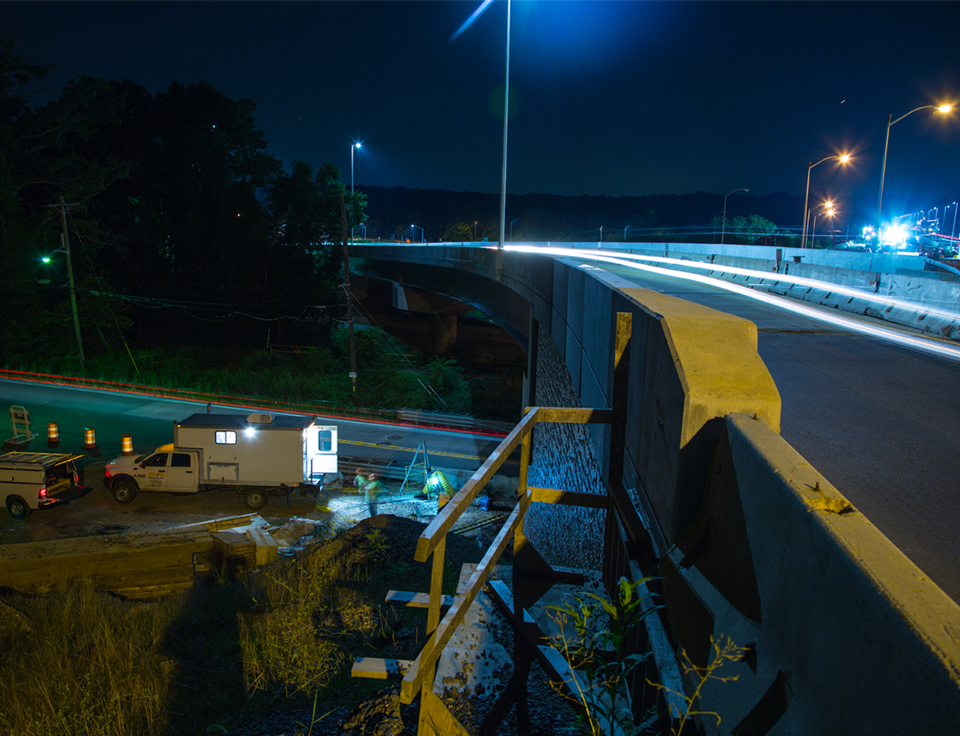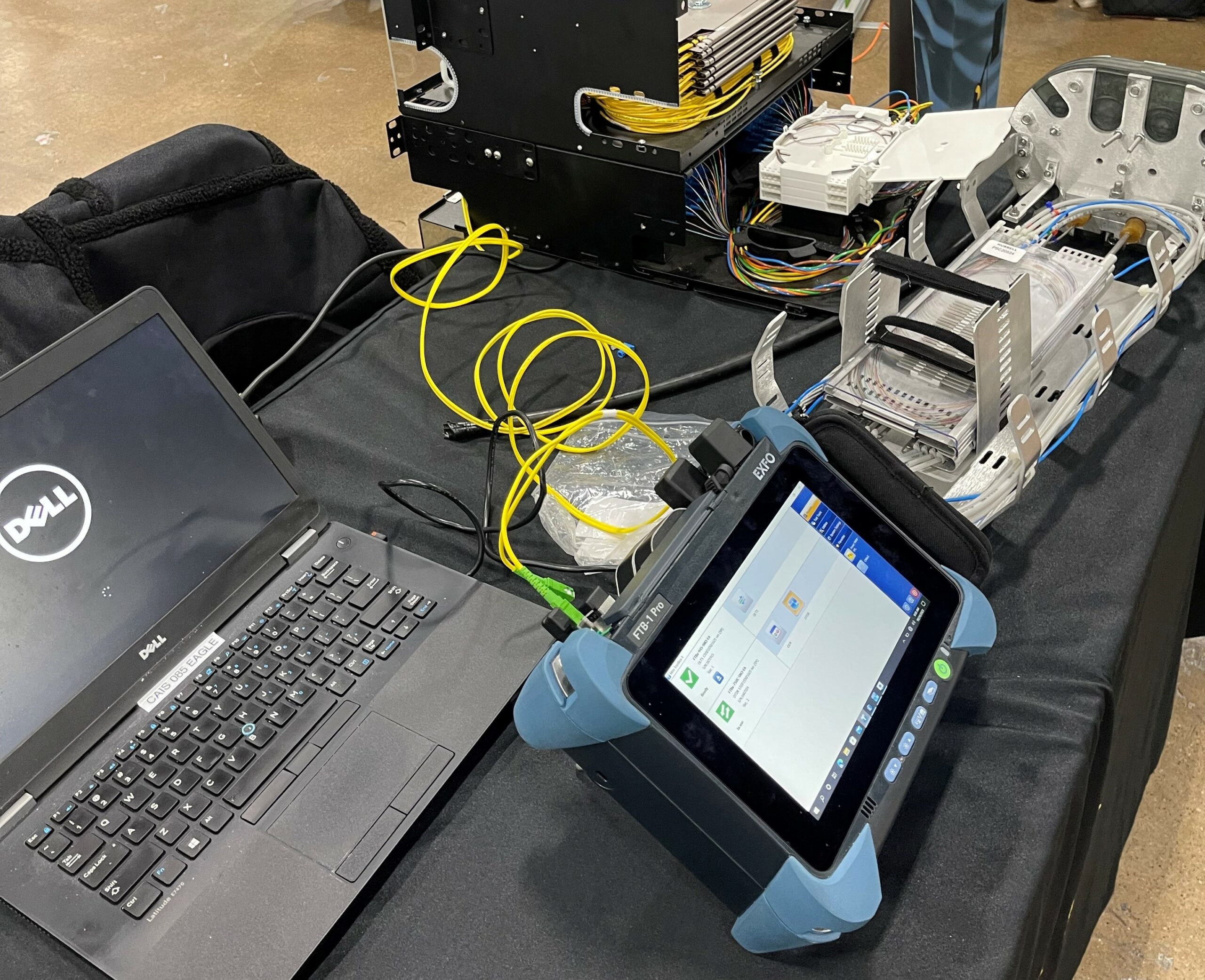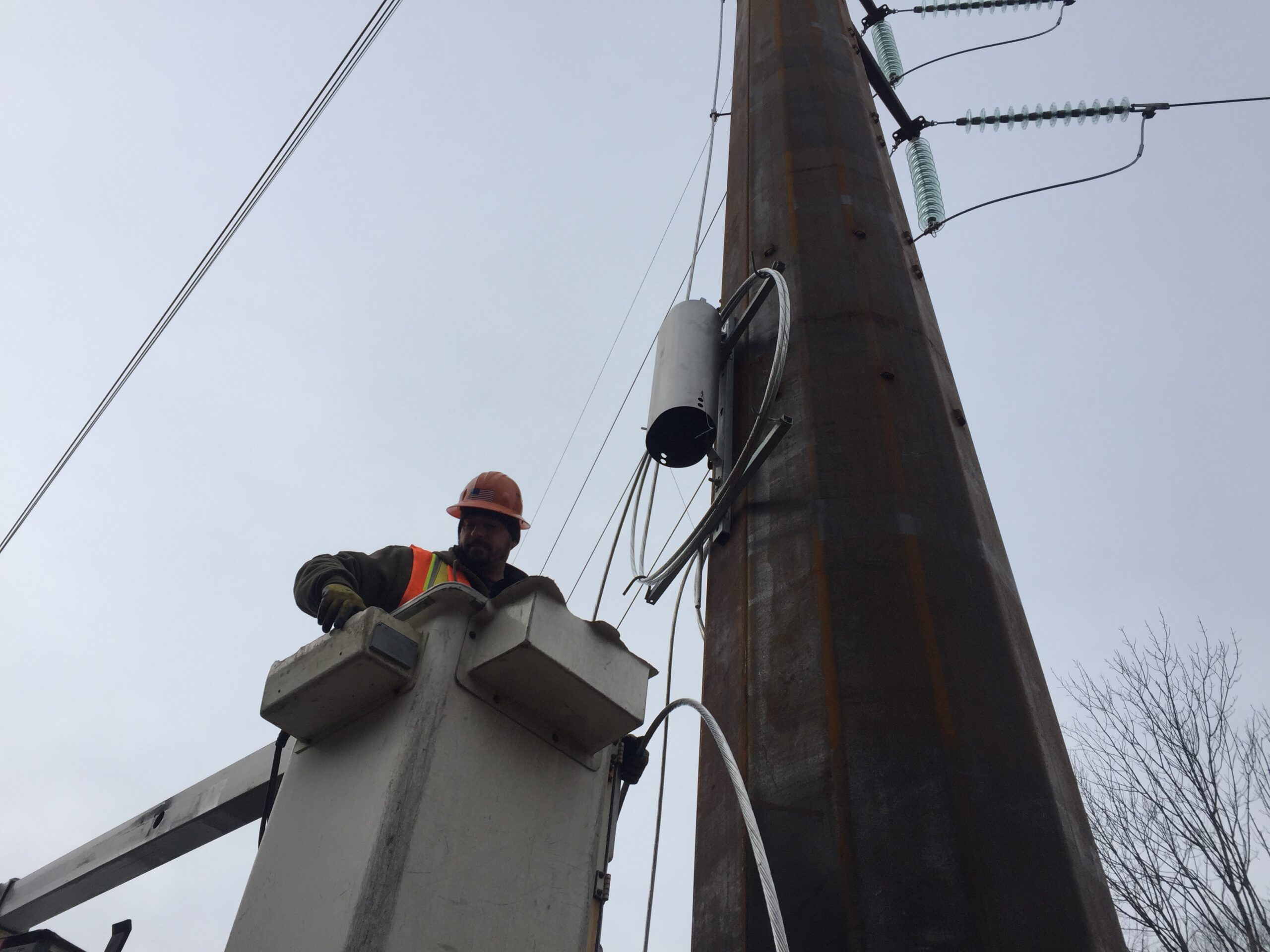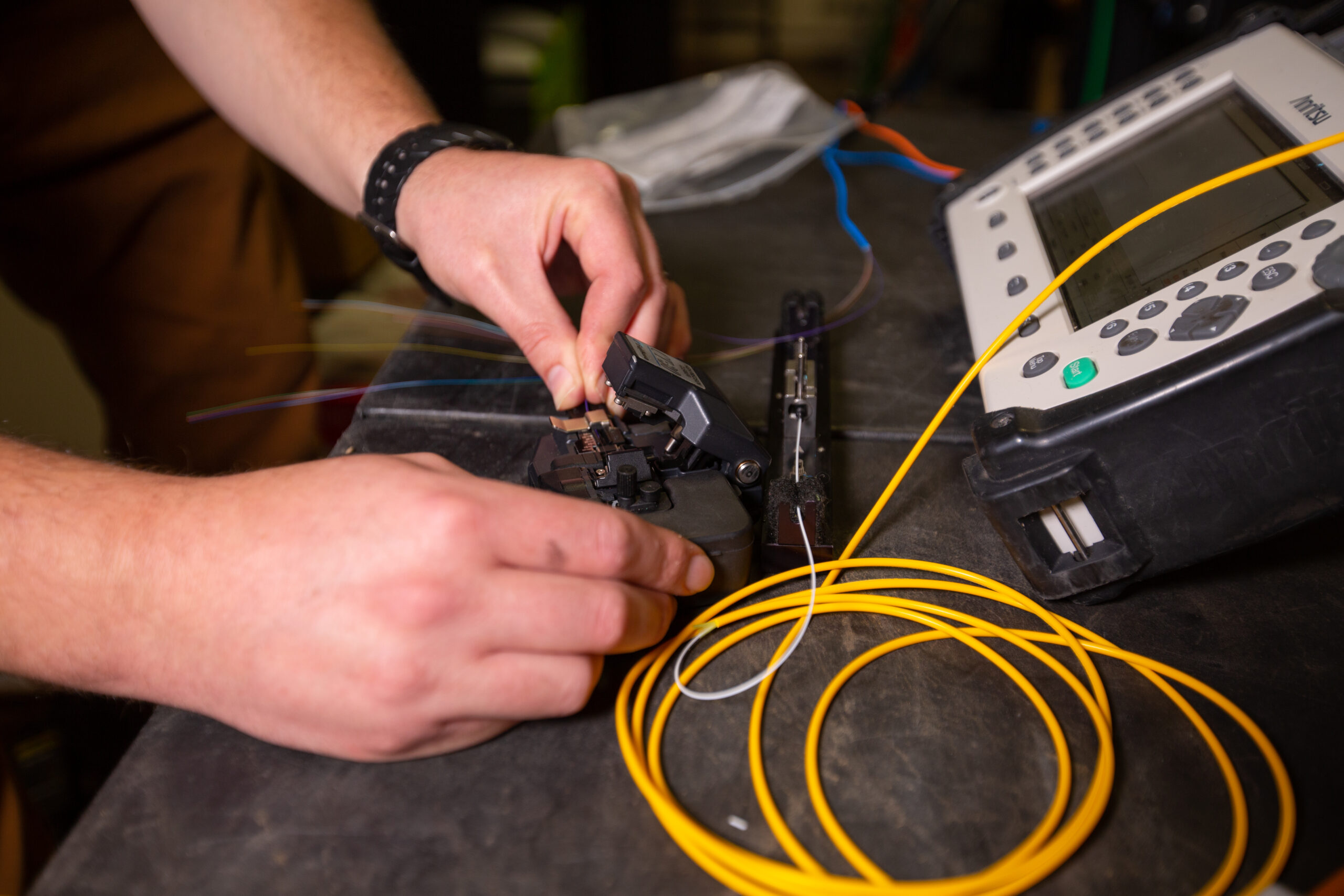In 2024, Pennsylvania experienced a record number of power outages, with 71 "reportable outage events," the highest number recorded in more than 30 years. These widespread outages disrupted electric service for residents and businesses across the state, including schools. When the municipal fiber network in Portsmouth, Viriginia, experienced outages during and after Hurricane Matthew passed through, city services and K-12 schools were faced with operational challenges until full service was restored.
Such a scenario, unfortunately, is common more often than not and pose a critical dilemma for municipal leaders. Many municipalities and K-12 schools operate on dated emergency fiber restoration SLAs (service level agreements) built for commercial environments. This leaves many networks exposed. When outages strike, dated SLAs cost communities valuable time, and money.
Understanding Mid-Atlantic Emergency Fiber Restoration SLA Requirements
Emergency fiber restoration in the Mid-Atlantic region presents unique challenges that require careful planning and clear service level agreements. By understanding these SLA requirements, municipalities and school districts can ensure rapid response and maintain essential services during storms or other disruptions.
Standard Response Time Expectations
Typical emergency fiber restoration SLAs generally outline several key timeframes to ensure a rapid and effective response. The initial response from the service provider is usually expected within four hours depending on location of the outage being reported, allowing the issue to be acknowledged and a response team to be dispatched promptly. Once on-site, a full assessment of the situation is typically completed within six hours, giving technicians the information they need to implement a solution.
Temporary restoration measures are often targeted to be completed within eight to twelve hours, providing a functional, if interim, level of service while permanent repairs are planned. Finally, permanent restoration is generally expected within 24 to 48 hours, ensuring that full network functionality is restored as quickly as possible to minimize disruption. These timeframes assume optimal conditions. Weather patterns often delay these goals. Smart contracts add contingencies for storms, ice, and flooding.
Critical Circuit Prioritization Framework
Proper emergency fiber restoration SLAs are critical for municipalities and school districts because these networks support essential public services and daily operations that communities rely on. Municipal systems often handle critical functions such as emergency response coordination, traffic management, public safety communications, water and utility monitoring, and administrative services. For school networks, an extended outage can disrupt instruction, delay important communications, and impact student learning.
Having well-defined SLAs ensures that service providers respond quickly and predictably during outages, reducing downtime and providing clear expectations for response times, on-site assessment, temporary fixes, and full restoration. They allow municipalities and schools to plan contingencies, maintain operational continuity, and demonstrate accountability to the public. In short, proper emergency SLAs are a safeguard for public safety, educational continuity, and community trust.
Municipal and K-12 school networks need to prioritize their systems. Such prioritization, as outlined here, ensures that critical services stay online first:
- Priority 1 (0–2-hour response): 911 call centers, emergency ops centers, hospitals, public safety comms
- Priority 2 (2–4-hour response): municipal government buildings, K-12 school administrative, traffic and water/sewer systems, fire/police substations
- Priority 3 (4–8-hour response): library and community centers, non-critical municipal facilities, schools, parks and recreation facilities
Geographic Considerations for the Mid-Atlantic Region
The Mid-Atlantic region’s diverse geography presents a range of unique challenges that contractors must understand and plan for when maintaining and restoring fiber networks. Coastal areas are particularly vulnerable to storm surge, flooding, and the corrosive effects of salt-laden air, all of which can accelerate network damage. Mountainous regions face their own difficulties, including ice storms, limited access to remote sites, and a shortage of available crews to respond quickly. Suburban and rural areas often involve long fiber runs with few backup options and extended travel times for contractor teams.
Service level agreements must take these realities into account by incorporating local staging of equipment, specialized tools for each environment, and backup crews to ensure timely response and restoration.
Building Stronger Emergency Restoration SLAs
But what are the essential elements that should be included in a stronger emergency restoration SLA? Clear, well-defined agreements set expectations for response times, on-site assessments, and restoration, helping to minimize downtime and maintain essential services.
Contractor Resource Requirements
Contractor resource requirements are a critical factor in ensuring timely and effective emergency fiber restoration. Adequate staffing, specialized equipment, and strategically located crews enable contractors to respond quickly, assess damage accurately, and restore services efficiently, even in challenging geographic or weather conditions. Minimum contractor capabilities that should be considered to ensure local readiness include:
- 24/7/365 emergency response with live answer
- Service vehicles and gear within 2 hours
- Certified municipal fiber technicians
- Emergency parts inventory
- Backup contractor partnerships
Communication Protocols and Escalation Procedures
Effective communication protocols and escalation procedures are essential for managing emergency fiber outages. Clear lines of communication and predefined escalation steps ensure that the right teams are notified promptly, decisions are made quickly, and restoration efforts proceed smoothly, minimizing downtime and disruption for critical municipal and school networks. Strong SLAs should require:
- Initial notification within 15 minutes
- Regular status updates during outages
- Executive notification for 4+ hour outages
- Full incident report within 48 hours
Performance Monitoring and Reporting
Performance monitoring and reporting are key to maintaining accountability and ensuring service reliability during emergency fiber restorations. By tracking response times, restoration progress, and overall SLA compliance, municipalities and K-12 schools can identify areas for improvement, verify contractor performance, and make data-driven decisions to strengthen network resilience. An SLA can be tracked for compliance by using key performance indicators such as:
- Quarterly reviews
- Annual capability assessments
- Continuous improvement sessions
K-12 School District Specific SLA Considerations
K-12 school districts face unique requirements that are often not fully addressed in standard municipal SLAs, making it critical to design service agreements tailored to their specific needs. Emergency restoration work, for example, must be thoroughly documented to meet local government compliance standards.
When developing a municipal SLA for K-12 schools, several key considerations should not be overlooked. E-rate compliance is essential, as all emergency work must be properly documented to qualify for reimbursement. The academic calendar must also be factored in, with provisions for rapid response during critical periods such as standardized testing or distance learning.
In addition, multi-site coordination is a major priority, requiring seamless alignment across campuses, transportation systems, and food service networks. By incorporating these elements, an SLA can better reflect the operational realities of K-12 districts while ensuring compliance and minimizing disruption to education.
Implementation Roadmap: Getting Your SLA Right
Creating an effective SLA, whether it is for K-12 schools or municipalities at large, begins with a clear implementation roadmap to ensure all aspects of emergency fiber restoration needs are addressed. The process starts with assessing current SLAs during the first two weeks, auditing existing terms, reviewing past outages, and identifying potential risks. In weeks three and four, development requirements are established, including defining response times, penalties for missed deadlines, and communication protocols.
The next phase, spanning weeks five through eight, should focus on market engagement and procurement, which involves issuing RFPs, evaluating contractor readiness, and negotiating terms to ensure the best possible service.
Finally, during weeks nine through twelve, the plan moves into implementation with staff training, and thorough documentation of all protocols to confirm that the SLA functions effectively under real-world conditions.
Measuring SLA Performance: Key Metrics That Matter
Effective management of service-level agreements (SLAs) relies on tracking the right performance indicators to ensure goals are consistently met. Key metrics include response measures, such as average response times, SLA compliance percentages, and adjustments for factors like weather that may impact performance.
Restoration metrics are also critical, encompassing the mean time to temporary and permanent repair, as well as user downtime. Additionally, communication and quality indicators play a vital role, including satisfaction scores, the accuracy of reports, and documented improvement actions.
Finally, monitoring these metrics provides a comprehensive view of SLA performance, enabling teams to identify gaps, optimize processes, and maintain high service standards.
The Celerity Advantage: Mid-Atlantic Emergency Restoration Expertise
At Celerity, we understand that Mid-Atlantic municipalities and school districts need more than generic SLA templates. Our emergency restoration services are specifically designed for the unique challenges of the region, backed by years of experience serving public sector clients.
Celerity's Mid-Atlantic Emergency Response Capabilities:
- 24/7 regional coverage with vehicles in the Mid-Atlantic region
- Municipal & K-12 expertise including E-rate compliance and public safety compliance
- Proven track record with 100% SLA compliance three years running, and average 3-hour response
- Weather-ready operations built for hurricanes, flooding, and ice storms
Our OSP Engineering team designs networks with emergency restoration in mind, while our emergency response specialists ensure rapid recovery when outages occur.
Ready to strengthen your emergency fiber restoration SLA? Contact Celerity today for a SLA assessment and customized emergency response plan. Don't wait for the next emergency to discover gaps in your current agreement.



